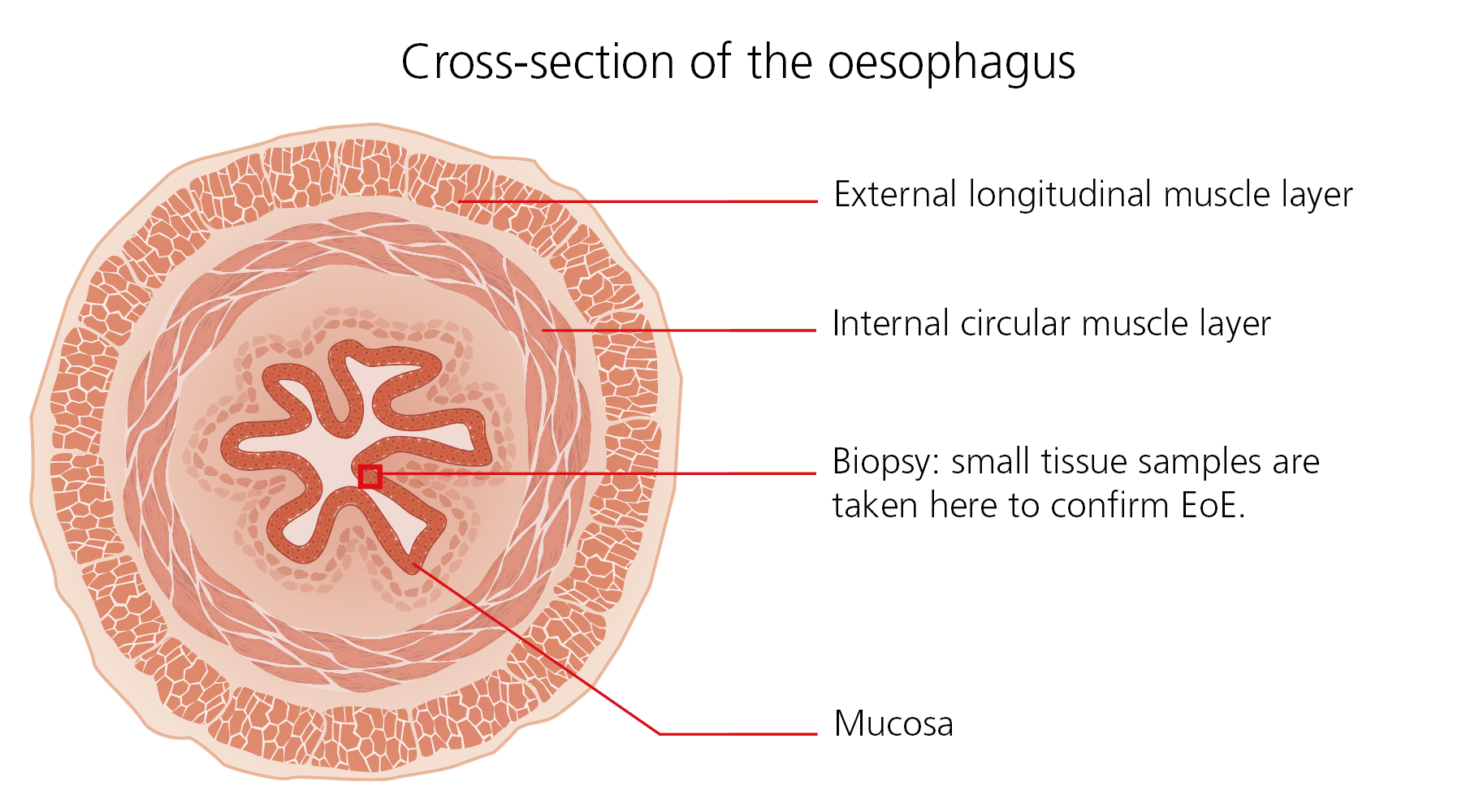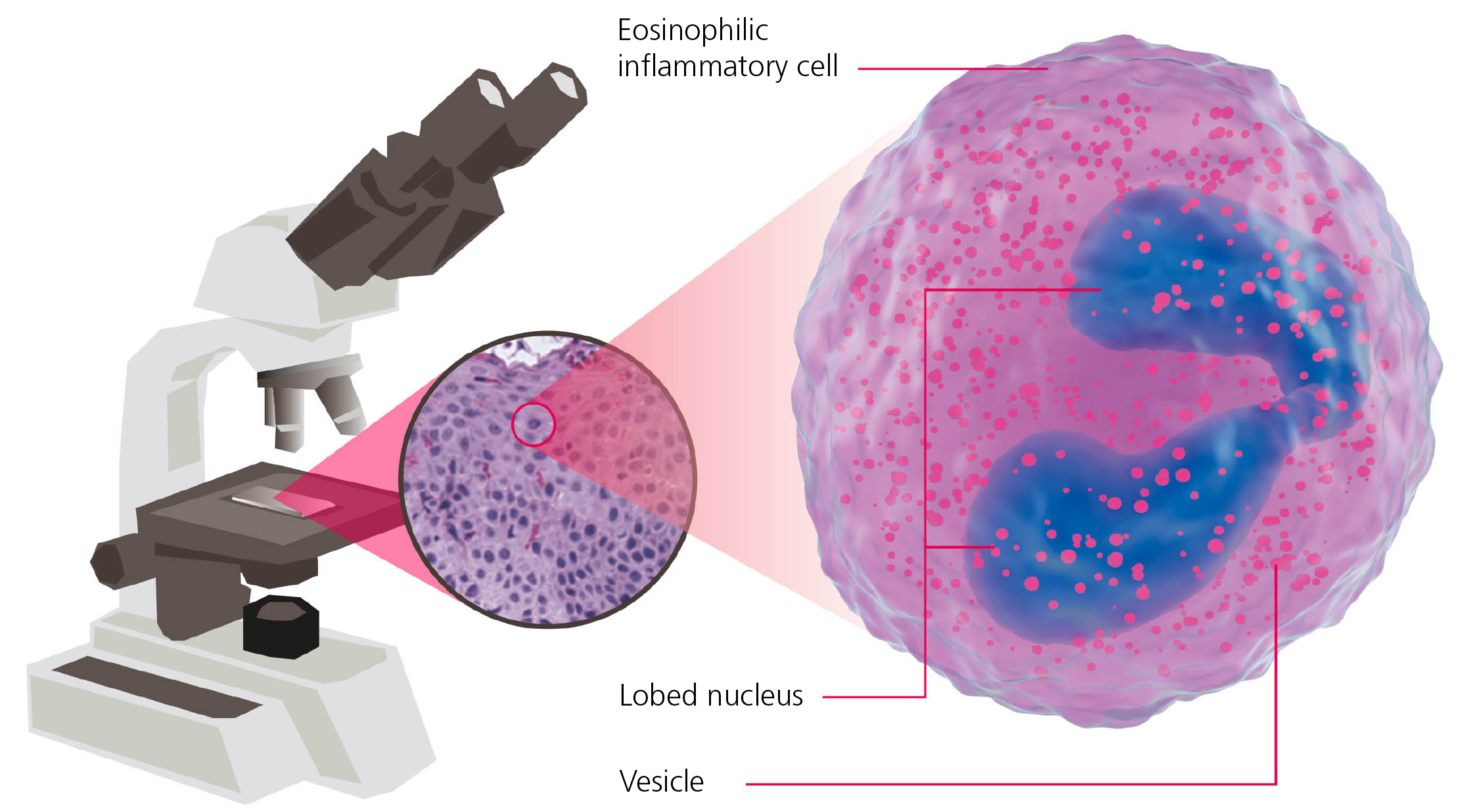SWALLOWING DIFFICULTIES:
EOSINOPHILIC OESOPHAGITIS?
INFORMATION FOR PEOPLE WITH THE CONDITION



How is eosinophilic oesophagitis diagnosed?
Eosinophilic oesophagitis (EoE) can only be reliably diagnosed by a gastroenterologist (digestive disease specialist). In addition to examining and evaluating the symptoms, an endoscope (flexible tube with image transmission) is used to examine the oesophagus and to collect tissue samples (biopsy) at the same time. Although, with EoE, there are often signs of chronic inflammation in the oesophagus, the decisive finding is an increased number of so-called eosinophilic inflammatory cells (particular types of white blood cells) in the mucous membrane biopsy.


The eosinophilic inflammatory cell has a (double-lobed) nucleus that contains the genetic material and a large number of granules, which contain substances that cause inflammation when released. Low levels of these eosinophilic inflammatory cells are present in the blood of every person where they play an important role in the defence against parasites (e.g. worms) and are associated with allergies. However, these cells are not normally found in the oesophagus.
In addition to EoE, there are other causes of inflammation of the digestive organs, such as gastro-oesophageal reflux disease (GORD) caused by gastric acid, eosinophilic gastroenteritis (inflammation of the gastric mucosa), infections caused by parasites, and the chronic inflammatory bowel disease Crohn’s disease.


